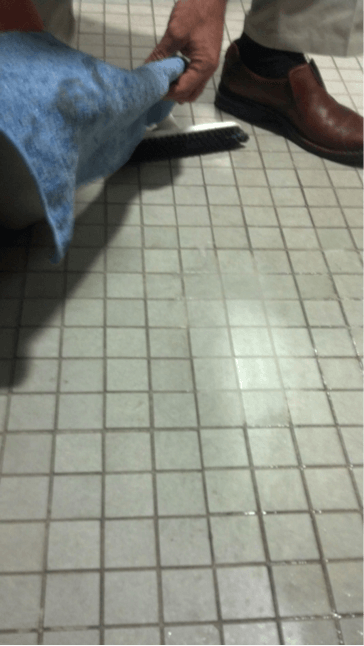Ok maybe don’t throw it away, but put it in storage.
In the microfiber age, traditional mopping is going the way of the tape deck or the tube television, its time to retire. For general cleaning, the process of physical removal is the most important thing we can do to maintain a healthy, clean and residue free environment. The products and tools we use can help us to achieve that goal, but no matter what the surface is, if removal is our focus, clean is the result.
So how do we remove?
If you spill a drink on your kitchen countertop, how do you remove it? Do you use something wet to pick it up, or dry?
When you think about it, how do we remove with something that is wet? We don’t, we can’t. That is why we battle dirty grout lines and the smell of urine in our restrooms; we can’t remove with our wet mop.
Imagine putting a wet mop on a tile and grout floor, while you may be wiping the tops of the tiles, the liquid (a mixture of water, chemical, urine salts, and soil load) always seeks out the lowest point, or grout lines, and carries with it the soil load and anything else it boosted off of that surface.
That’s what we call coloring in the lines.

Grout line restoration in one of NC’s major universities.
As you can see, this problem can be corrected and maintained in a way that will keep from having to restore these grout lines as often. It isn’t realistic to think that you have the time or resources to run a scrubber with a squeegee or vacuum on this floor daily for general purpose cleaning, but maintaining it between restorations is easiest with a pre-spray and dry mop technique (with Microfiber), because we can be sure that we are removing the soil load along with the liquids we need to put down on the floor.
Since the chemical is designed to lift the load (we may need some agitation), all we have to focus on is the word “removal,” and dry removes wet all day long.
The added benefits to this type of mopping is twofold, a reduction in labor time, but also a reduction in chemical usage, adding green cleaning process improvement to green product purchasing. If staff is able to stay on task longer without having to travel back to the janitor’s closet to dump and refill, productivity goes up and the goal of doing more with less is accomplished.
Jake Chaney is the Sales Director for WJ’s Office Supply and Eco-Clean Divisions. He is also Green Clean Institute Certified Distributor Representative.
WJ’s Eco-Clean division is dedicated to providing information to those interested in protecting the health of the environment, indoor air quality, front-line cleaning staff, and occupants of a given environment (human or otherwise).


